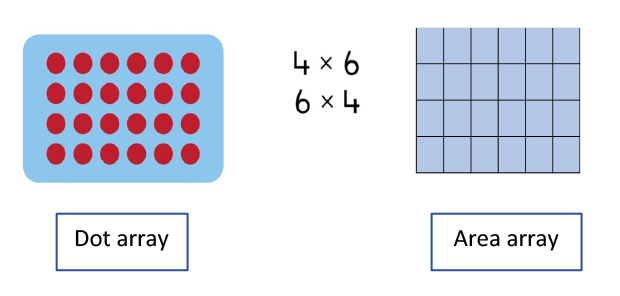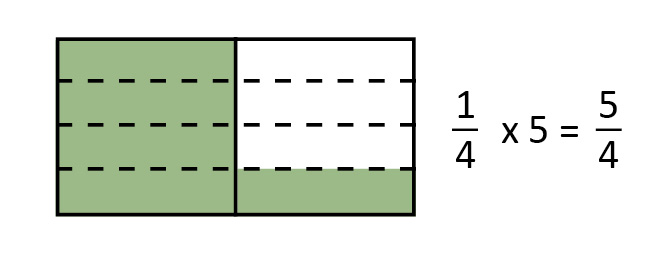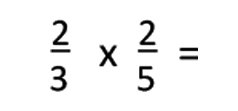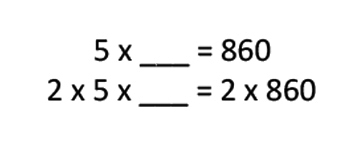Cal's Corner
Focus on Fractions: A Visual Model to Teach Multiplication and Division of Fractions
Employing Computational Thinking when teaching multiplication and division of fractions.
There are a few statements from elementary school mathematics that seem to be universally imprinted in the minds of adults. Two of these relate to multiplying and dividing fractions. For multiplication, adults usually recall the rule, “Multiply the top numbers and multiply the bottom numbers.” For division, they often remember the rhyme, “There’s no need to wonder why, just invert and multiply.” This blog explains the reasoning behind the rules for multiplying and dividing fractions and why understanding is important.
In the move to use visual models to provide understanding of mathematical ideas and skills, there seems to be an overload of suggestions that can be applied across all possible situations involving multiplication and division of fractions. And yet, this writer often sees a failure to employ these visual models due to the lack of pressing need to teach multiplication and division of fractions. The usual comment is something like, “Why is it important to know how to multiply or divide with fractions?” The obvious real-world applications of multiplying and dividing fractions involve percentage (discount, commission, and interest rates), but there are myriad unseen instances where digital algorithms work with operations involving fractions. The importance of knowing how to do the operations might have diminished, but there is a greater need to develop the understanding behind the skills.

Computational thinking
Computational thinking is one of the expressions used to describe teaching that helps students think and solve problems in ways a computer would process and solve a problem. This teaching enables students to be competent at writing computer code and these codes become digital algorithms. There are too many components within computational thinking to discuss in this blog, but an analysis of the writing related to the topic1 suggests that good code must apply to all instances of the situation. For example, the approach used for a unit fraction should be the same as a multiple fraction and for a mixed whole number or fraction. The examples below illustrate a uniform teaching approach across both multiplication and division, as well as situations within each operation.
Multiplication of fractions
It is possible to use the set, length or number line models for some situations involving multiplication or division of fractions. However, the most universal visual representation is the array. In particular, it is best to use the area form of the array, as shown on the right, for the whole number example 4 by 6.

When multiplying fractions using the array model, there are two basic forms: one factor is a fraction or both factors are fractions.
Multiplying when one factor is a fraction
The example below is an area illustration of 1/4 by 5.

In this example, one-fourth of each whole has been shaded. The answer can be found by counting the number of one-fourths, or by rearranging the fourths to cover one whole plus an extra fourth, as shown below. The answer (product) is 5/4.

Below is a similar example using the non-unit fraction 3/4. By counting the number of fourths that have been shaded suggests that the final answer is found by multiplying the numerator (3) by the whole number (5).

The answer here is 15/4 when expressed as an improper fraction, or 3 3/4 when expressed as a mixed number.
Multiplying when both factors are fractions
The sequence of pictures below shows the steps to find the answer to 2/3 by 2/5.

The first step shows one whole. In the second step, this whole is divided into thirds and two of those thirds are shaded yellow to show 2/3. In the third step, the whole is divided into fifths to form an array of three by five. Two of those fifths are shaded green to show 2/5. The light green overlapping region is the product (answer).
Step 1: Step 2: Step 3:

In the final array picture, the original whole is divided into fifteenths (15 equal size parts). The product is four of those parts or 4/15.

Repeating these steps with other examples shows the reason behind the rule, “The product of two fractions is found by multiplying the denominators of the fractions, then the numerators of the fractions.” Note: In a curriculum that emphasizes thinking that helps students write digital algorithms (code), it is necessary to have one sequence of steps that can be applied to all situations. The approach outlined in the previous multiplication examples and the following division examples help to achieve that aim.
Division of fractions
The array is a good visual model for interpreting division and showing steps to divide. As shown in the previous examples, when using the area model to multiply the two factors (or dimensions) must be known. For division, the area (total) and one factor are known, and one factor is unknown.
The example below uses whole numbers with an area context to illustrate division.

|
The contractors say they have enough turf to cover 860 m2. If the turf is laid in a strip that is 5 m wide, |

There are multiple methods that can be used to find the answer. The digital algorithm might break the total area into multiples of 5, then divide each to determine the digits in the quotient (answer).

For fractions, it is helpful to consider an extra step that can sometimes be used to simplify the division process. For the example above, the diagram can be modified slightly by adding a second rectangle (doubling the dimensions and the area). This may make it easier to divide because the known dimension is now 10 m, as shown below. Regardless of whether it is easier, this is the approach that is used when dividing fractions.

The basis of this approach is algebraic thinking that uses the principle of balancing equations. In particular, equals multiplied by the same number are still equal.

Dividing when one factor is a fraction
There are 2 equations that can be used to describe the example below:

Using the procedure described above, more copies of the rectangle can be added to make the calculation easier. The diagram below shows that 3 copies of the original rectangle gives the known dimension of 1 m.

Dividing by a unit fraction can be understood by asking questions such as, “How many one-thirds are there in 8?” This is an acceptable alternative, but does not work well when the divisor is a non-unit fraction. We need to keep in mind that computational thinking that leads to good computer code should work across all of the possible examples. The following shows how the above thinking applies when the divisor is the non-unit fraction 2/3.
The 2 equations for the situation below are:

For this example, 3 copies of the original rectangle give:

In this example, it is necessary to divide by two. Therefore, the unknown dimension is 12 m. In summary, to find the quotient it has been necessary to multiply by three (the denominator), then divide by two (the numerator). Repeating these steps with other examples for situations where one or both of the dimensions are fractions reinforces the pattern, “When we divide by a fraction, we always multiply by the denominator and then divide by the numerator.” By carefully working through the content discussed in this blog, it is easy to see there is valuable reasoning behind the rote, meaningless patter that most of us recall when multiplying and dividing fractions.
Space does not allow a full discussion of each multiplication or division problem type. But we do all need to realize that because of developments in technology, there is truly no longer a need to understand all the individual procedures that were once required. Instead, the goal is to understand and discuss good general mathematics procedures so that in the future, students might write their own algorithms using simple computer code.
1Wing, Jeannette (2014). “Computational Thinking Benefits Society”. 40th Anniversary Blog of Social Issues in Computing.




